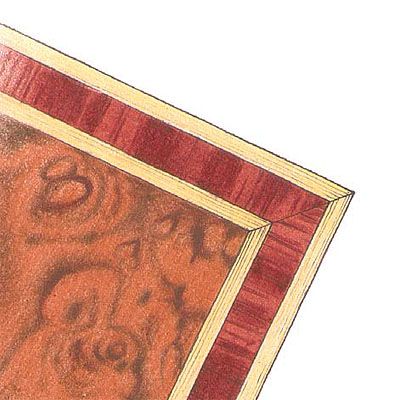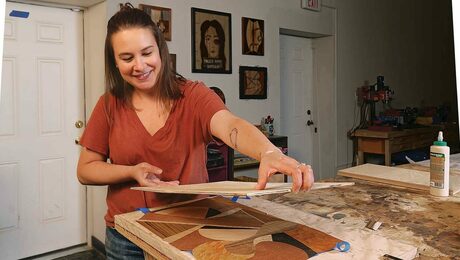Decorative Veneering
Assembling a complex pattern requires only basic tools and a logical approach
Synopsis: A few basic cutting and assembly techniques help vanquish the fear of working with veneer. Learn principles to help in your next project, including appropriate tools, tool tune-up, cutting techniques, bookmatching, cutting stringing, and gluing. Paul Schürch, who wrote a book on veneering, demonstrates all these tips while building a beautiful miniature tabletop. He shares his time-tested jig for making perfect stringing, as well as tips for finishing burl veneer.
From Fine Woodworking #164
In the many years I’ve been teaching, I’ve found that many students initially are afraid of veneer—a thin, fragile material. But that fear disappears once they’ve learned a few basic cutting and assembly techniques. By using a common chisel in uncommon ways and learning to tune up and use a standard veneer saw, assembling a complex panel becomes as easy as cutting and taping together paper.
Decorative veneering is the process of assembling the pieces of a design like a jigsaw puzzle, forming a single sheet. The design then can be glued onto a substrate in one piece. This eliminates the need to rout out a recess for inlay after gluing the main veneer to a core, and it offers a world of complex design possibilities.
Wood veneer offers a wonderful and varied palette of color and grain found in the burl, trunk and crotch areas of a tree. Burl veneer is my favorite because of its swirling patterns of reflecting light and color. I often use it as a background for marquetry. In the panel assembled for this article, a four-way book-match draws the eye toward the center of the panel and offers a rich contrast to the border. I used walnut burl for the center, or background, mahogany as a medium-colored border and a thin border banding (traditionally called a filleti) of padauk and sycamore to frame the background and separate it from the border.
The same cutting and assembly techniques you will learn making this panel can be used to make an endless variety of designs, in a variety of sizes and shapes, with different combinations of border, background and banding. The scale and style of the panel in this article are well suited for the top of a jewelry box. However, larger decorative panels made with these same techniques also are used in furniture, such as case pieces and beds.
For the full article, download the PDF below.
Fine Woodworking Recommended Products

Whiteside 9500 Solid Brass Router Inlay Router Bit Set

Bahco 6-Inch Card Scraper






















Log in or create an account to post a comment.
Sign up Log in